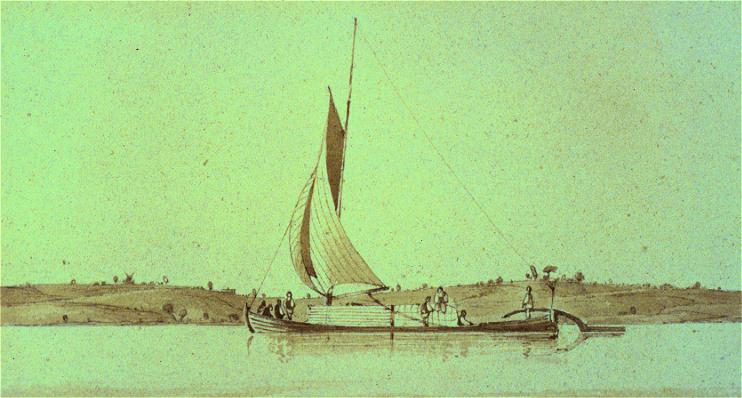In the early days of Upper Canada (now Ontario) during the 1700s, one type of watercraft stood out as an essential vessel for transportation and trade: the Durham boat. Join us on a journey back in time as we delve into the fascinating details of this remarkable boat that played a significant role in shaping the history and development of Upper Canada.
Sturdy and Practical Design:
The Durham boat was a flat-bottomed, shallow-draft watercraft known for its durability and versatility. Crafted from sturdy materials such as oak, pine, and cedar, this boat boasted a robust construction that could withstand the demands of navigating both rivers and lakes. Its design focused on practicality, allowing for the transportation of goods, people, and even livestock.

Dimensions and Structure:
Typically, a Durham boat measured around 40 to 60 feet in length, with a width of 7 to 8 feet. Its flat-bottomed hull facilitated easy navigation in shallow waters, while its sleek, narrow shape ensured stability and efficient movement through the currents. The boat featured a shallow draft, enabling it to traverse even the most challenging waterways found in Upper Canada.
Cargo and Passenger Capacity:
The Durham boat excelled in carrying substantial loads of cargo and accommodating passengers. With a generous cargo capacity of several tons, these boats were instrumental in transporting goods such as furs, lumber, and agricultural produce. Additionally, they could accommodate a significant number of passengers, making them essential for travel and exploration across Upper Canada’s expansive water network.

Propulsion and Navigation:
Durham boats relied on human power for propulsion. A crew of skilled boatmen, typically numbering around 10 to 15 individuals, manned these vessels. These boatmen used long wooden poles to push the boat forward, skillfully navigating through shallow waters, rapids, and narrow channels. In areas with deeper water, they utilized oars to propel the boat with greater speed and efficiency.
Versatility and Adaptability:
The Durham boat’s adaptability allowed it to navigate a variety of water conditions. Its shallow draft and flat bottom facilitated easy passage through rivers and streams, while its sturdy construction made it capable of withstanding the occasional rough waters of larger lakes and rivers. This versatility made the Durham boat a trusted companion for exploration, trade, and transportation throughout Upper Canada.
Importance in Trade and Settlement:
The Durham boat played a pivotal role in the economic development of Upper Canada. It served as a lifeline for transporting goods between settlements, providing essential links for trade and commerce. From carrying furs and agricultural products to facilitating the movement of settlers, the Durham boat acted as a catalyst for the growth and prosperity of the region.

Conclusion:
The Durham boat stands as a testament to the ingenuity and resourcefulness of early settlers in Upper Canada. Its robust design, cargo capacity, and adaptability allowed it to navigate the waterways with ease, connecting communities and facilitating trade. Today, the legacy of the Durham boat lives on, reminding us of the vital role it played in shaping the history and development of Upper Canada.
